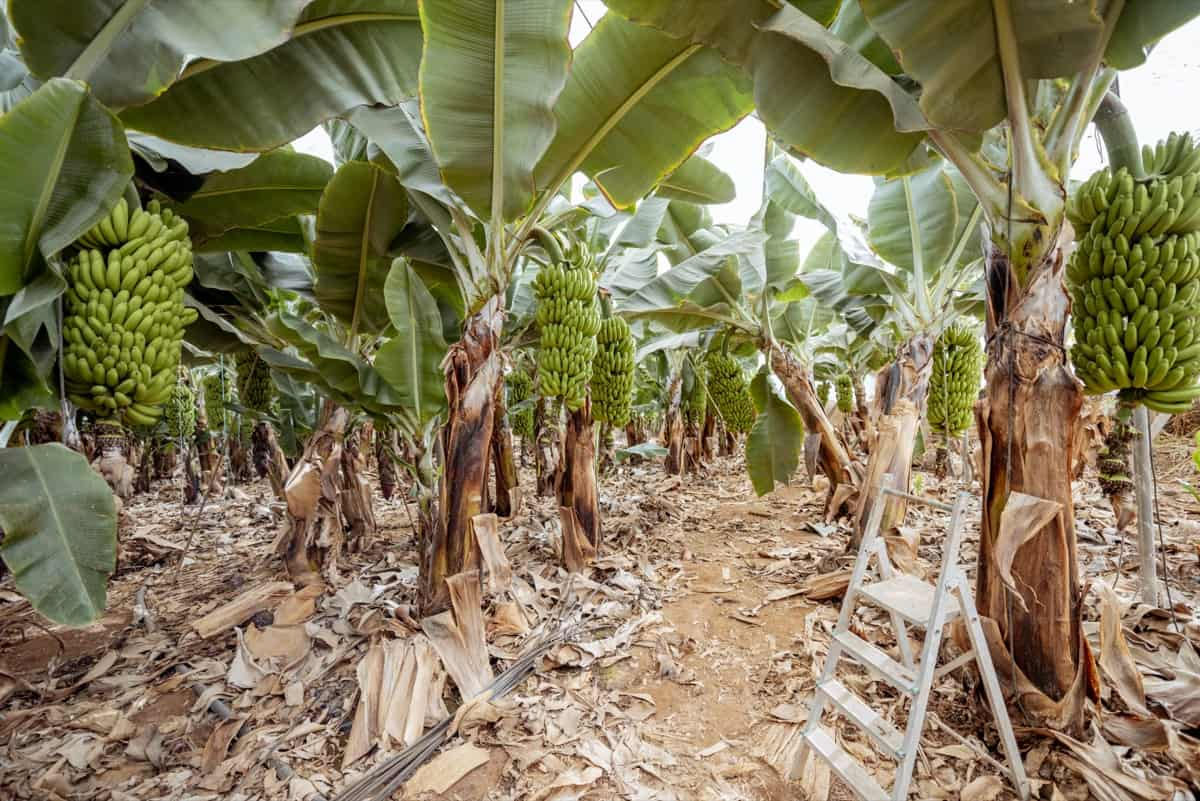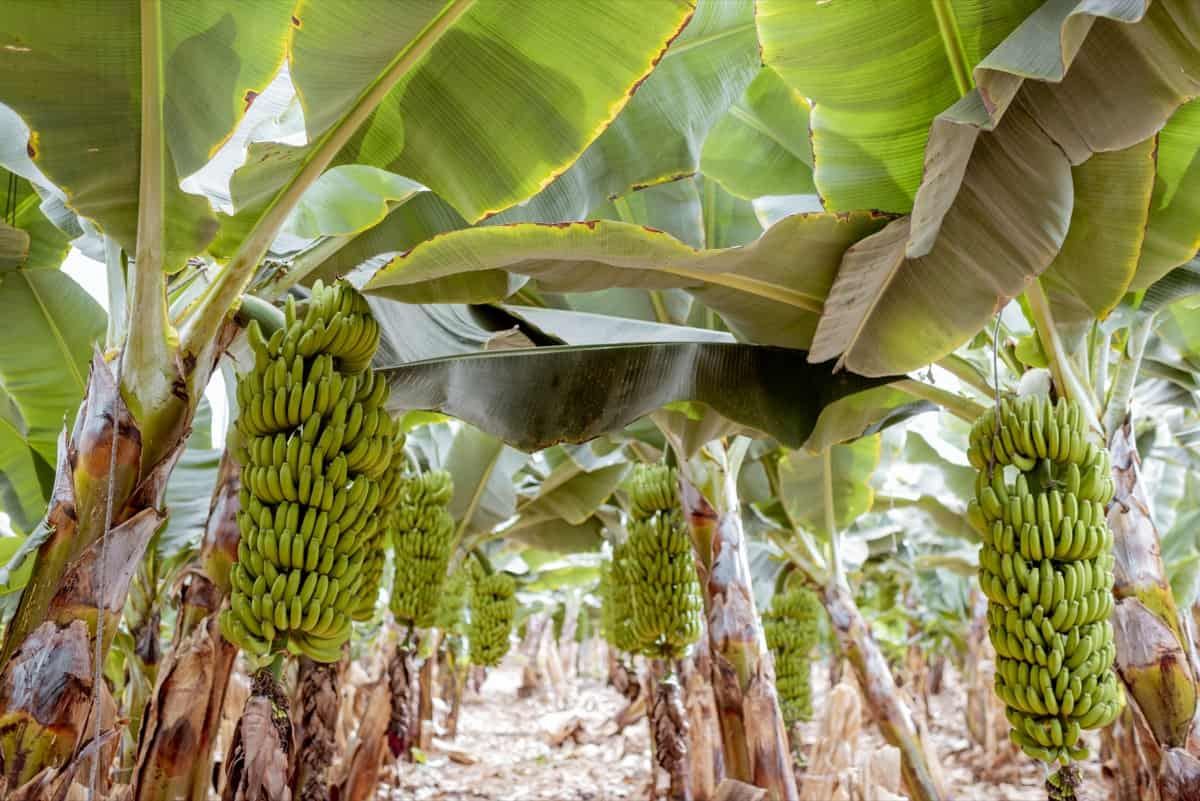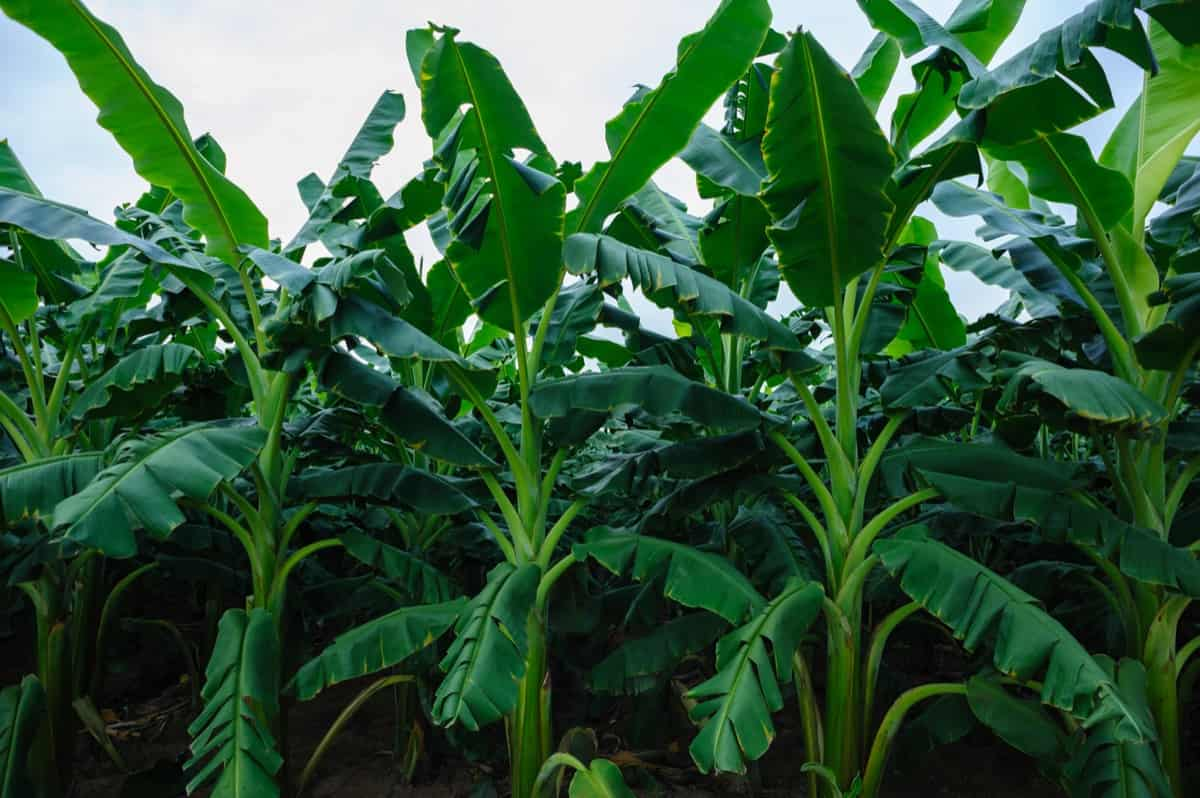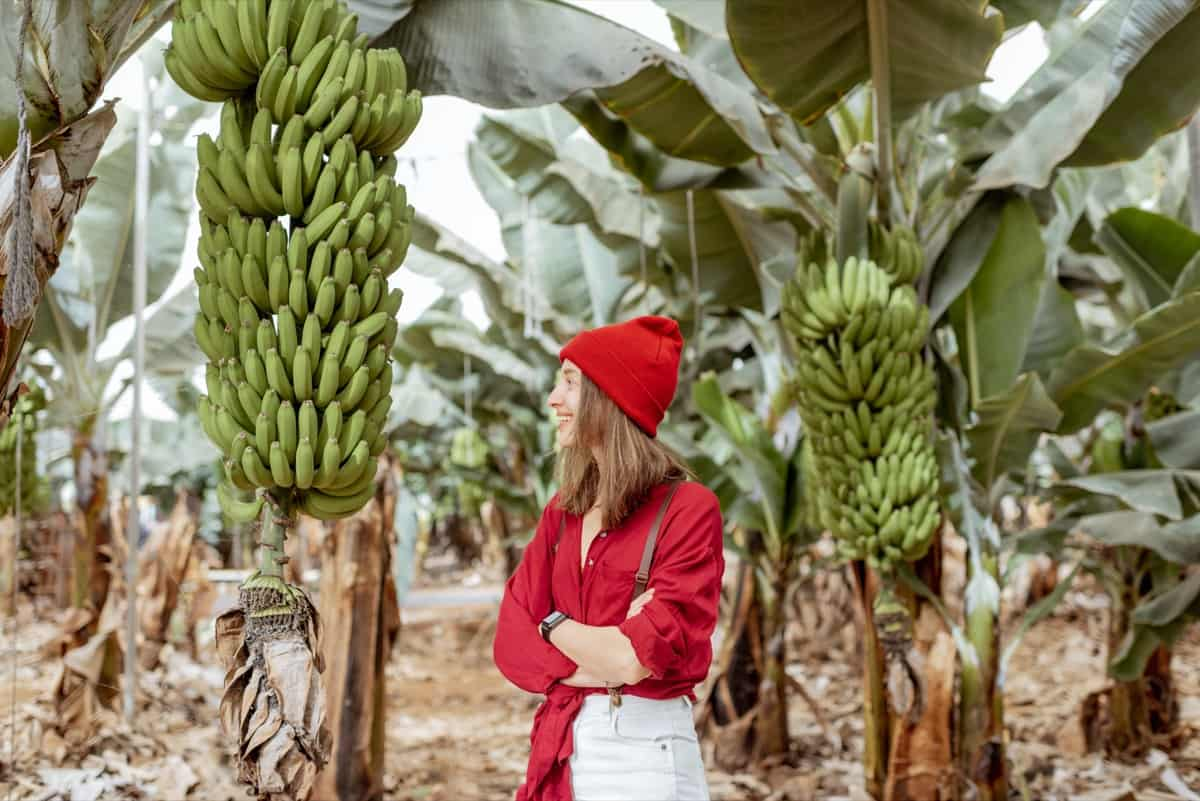Bananas, with their delicious taste and high nutritional value, are a beloved fruit enjoyed by people worldwide. Whether eaten fresh, blended into smoothies, or used in baking, bananas are a staple in many diets. However, banana trees are not immune to the threats posed by various pests and diseases that can wreak havoc on your banana orchard.

If you’re looking to maintain a thriving banana plantation while minimizing the use of synthetic chemicals, you’ve come to the right place. In this guide, we will explore effective natural and organic methods to control banana pests and keep your banana trees healthy.
How to Control Banana Pests Naturally
Banana Pests: Identifying the Most Common Pests and Their Impact on Your Crop
- Banana Rhizome Weevil (Cosmopolites sordidus): These weevils attack the plant’s underground rhizomes, causing structural damage and reducing nutrient uptake. Infected trees exhibit wilting and reduced fruit production.
- Banana Stem Weevil (Odoiporus longicollis): These weevils tunnel through the banana plant’s stem, leading to weakened stems and plant collapse. Their presence is often indicated by sawdust-like frass.
- Banana Leaf-Eating Caterpillar (Opodiphthera spp.): These voracious caterpillars can defoliate banana trees rapidly, affecting photosynthesis and fruit development.
- Banana Aphid (Pentalonia spp.): Aphids feed on plant sap, transmitting the destructive banana bunchy top virus. They weaken trees, causing stunted growth and deformed fruit.
- Banana Thrips (Various species): Rust thrips, leaf thrips, and flower thrips damage banana leaves and flowers, impacting fruit development and quality.
- Banana Lacewing Bug (Stephanitis spp.): These bugs feed on banana leaves, causing leaf discoloration and reduced photosynthesis.
Natural and Organic Methods for Controlling Banana Pests: An Overview
Using Neem Oil to Control Banana Pests: A Safe and Effective Method
Neem oil, made from neem tree seeds, is a safe and eco-friendly solution for managing banana pests. Its natural compounds disrupt the life cycle of insects, acting as a repellent, anti-feedant, and growth regulator. Neem oil is easy to apply and poses minimal harm to beneficial insects, making it a sustainable choice for pest control. Regular neem oil treatments can help protect your banana trees from aphids, thrips, and other common pests while preserving the health of your orchard and the environment.
The Role of Beneficial Insects in Controlling Banana Pests: Introduction of Predatory Insects
Beneficial insects are crucial in maintaining a balanced ecosystem within your banana plantation. Introducing predatory insects like ladybugs, lacewings, and parasitic wasps can help naturally control banana pests. These beneficial insects feed on or parasitize common banana pests, keeping their populations in check. By encouraging the presence of these natural allies, you can reduce the need for chemical interventions and promote a healthier, pest-resistant banana crop.
In case you missed it: Common Banana Diseases: Symptoms, Spread, Identification, Treatment, Control, and Management

Companion Planting: How Planting Certain Trees Together Can Deter Banana Pests
Companion planting involves strategically planting specific crops alongside your banana trees to deter common pests. For instance, marigolds and basil emit natural repellents that discourage banana aphids and thrips. Additionally, planting nitrogen-fixing legumes near bananas can enhance soil health and make them stronger and more resilient trees. By companion planting, you can create a natural barrier against banana pests and promote a harmonious garden ecosystem.
Crop Rotation: How Rotating Your Banana Crop Can Help Control Pests
Crop rotation is a sustainable practice that disrupts the life cycles of banana pests and diseases. By periodically changing the crop of your banana trees to different areas of your plantation, you minimize the buildup of pests in the soil. This natural pest control method minimizes the risk of infestations and allows the land to recover from pest pressure. Proper crop rotation can help maintain healthy soil and ensure the long-term vitality of your banana orchard while reducing the need for chemical treatments.
Using Diatomaceous Earth to Control Banana Pests: A Non-Toxic and Organic Method
Diatomaceous Earth is an organic and non-toxic solution to combat banana pests. This fine powder, made from fossilized diatoms, damages the exoskeleton of insects upon contact, causing dehydration and death. Sprinkle it around the base of banana trees or directly on affected areas to deter pests like aphids, thrips, and caterpillars. Ensure it stays dry for effectiveness. Diatomaceous Earth is a safe, eco-friendly, and cost-effective method to protect your banana crop without harming the environment.
Traps and Barriers: How to Use Traps and Barriers to Control Banana Pests
Traps and barriers are valuable tools to thwart banana pests. Yellow sticky traps attract and capture flying insects like aphids and thrips. Wrap banana stems with sticky tape or collars to deter stem-boring weevils. Physical barriers, like mesh nets or row covers, keep caterpillars and aphids at bay. Regularly inspect and maintain traps and barriers to ensure their efficacy in safeguarding your banana plantation.
Biological Control: How to Use Parasitic Wasps to Control Banana Pests
Parasitic wasps offer a natural and sustainable solution for banana pest management. Species like Encarsia formosa and Aphidius colemani parasitize aphids, reducing their populations. Release these beneficial insects into your banana plantation at the first sign of aphid infestations. Provide them with suitable habitats and avoid using broad-spectrum pesticides that may harm them. Biological control using parasitic wasps is an eco-friendly approach that maintains a balanced ecosystem in your banana orchard.
In case you missed it: Common Banana Damaging Pests: Symptoms, Treatment, Prevention, and Management

Integrated Pest Management (IPM): A Holistic Approach to Controlling Banana Pests
IPM is a holistic approach that combines various methods to manage banana pests while minimizing environmental impact effectively. It involves monitoring pest populations, employing natural predators, using traps and barriers, and implementing cultural practices such as pruning and proper irrigation. Chemical treatments are used as a last resort and only when absolutely necessary. By integrating these strategies, IPM ensures the long-term health of your banana trees and reduces the reliance on harmful chemicals, promoting a sustainable and thriving banana orchard.
Banana Pest Control with Natural and Organic Treatment
| Pest | Natural and Organic Treatment |
| Banana Rhizome Weevil | Biological control using beneficial nematodes. Implement proper sanitation |
| Banana Stem Weevil | Remove and destroy affected trees. Apply neem oil or garlic spray. |
| Banana Leaf-Eating Caterpillar | Handpick and dispose of caterpillars. |
| Banana Aphids | Release ladybugs or lacewings for aphid control. Spray a neem oil or soap solution to deter aphids. |
| Banana Thrips (Rust Thrips, Leaf Thrips, Flower Thrips) | Introduce predatory mites or insects like thrips. Use reflective mulch to disrupt thrips’ movement. Neem oil spray can help manage thrips infestations. |
In case you missed it: Banana Infectious Chlorosis Disease Management: Symptoms, Treatment, Chemical, Biological, and Organic Control

Conclusion
Effective banana pest control involves a combination of proactive measures discussed above. These methods minimize harm to the environment and promote the long-term health of your banana trees. Monitor your plantation regularly and adapt your pest control strategy to ensure a thriving banana crop.
- Beneficial Insects in Pest Management
- Natural Solutions for Pest Control in Flower Gardens
- Types of Fungicides Used in Agriculture
- Common Issues in the Fruit Development Stage of Pomegranate Farming
- Fruit Development Issues in Papaya: Easy Solutions and Treatment
- Soil-Borne Diseases and How to Protect Your Plants
- Practices to Prevent Disease Spread in the Garden
- From Wilted to Thriving: How to Treat Root Rot Naturally in Houseplants
- Natural Remedies to Cure Brown Spots on Fig Tree Leaves
- Natural Solutions for Poinsettia Problems: 100% Effective Remedies
- How to Control Calla Lily Problems: Natural Remedies for Leaf and Flower Problems
- How to Fix Morning Glory Problems: Natural Remedies for Leaf and Flower Issues
- Natural Remedies for Tulsi Plant Problems: 100% Effective Solutions for Home Gardeners
- Natural Pesticides for Zinnias: 100% Effective to Kill Bugs on Zinnia Plants
- How to Fix Daisy Leaf and Flower Problems: Exploring Causes and Natural and Home Remedies
- Natural Ways to Fix Common Agave Plant Problems: Exploring Causes and Solutions
- Natural Ways to Fix Common Bamboo Plant Problems: Exploring Causes and Solutions
- Natural Ways to Fix Common Spider Plant Problems: Exploring Causes and Solution
- Natural Ways to Fix Common Snake Plant Problems: Exploring Causes to Solution
- How to Get Rid of Fireworms in Gardens: 100% Effective Control Strategies
- How to Get Rid of Kudzu Bug In Garden: A Comprehensive Guide to Control and Treatment
- Reviving Yellowing Meyer Lemon Leaves: Causes and Solutions
- How to Get Rid of Twig Girdlers: 100% Effective Control Strategies
- Ultimate Guide to Managing Peacock Plant Pests and Diseases: Prevention and Treatment
- How to Get Rid of Crane Flies in Lawns: 100% Effective Control Strategies
- Identifying and Managing Sudden Death Syndrome in Soybeans
- How to Get Rid of Billbugs in Lawns: 100% Effective Control Strategies
- How to Manage Red Crown Rot in Soybean: Control and Prevention Strategies
- Soybean Yield Boost: Tackling Soybean Cyst Nematode with Expert Strategies
- Turning Over a New Leaf: Fixing Yellowing Leaves on Peach Trees
- Management of Philodendron Pests and Diseases: Effective Strategies for Control, Treatment and Prevention
- Maximizing Agricultural Yields: Effective Strategies for Ragweed Management
- Systemic Insecticides for Aphid Control: A Comprehensive Guide
- How to Get Rid of Armored Scale Insects: Remedies and Treatment
- How to Get Rid of Apple Snail Eggs in the Garden: Treatment and Remedies
- Ultimate Guide for Applying Acaricide Insecticides for Tick Control